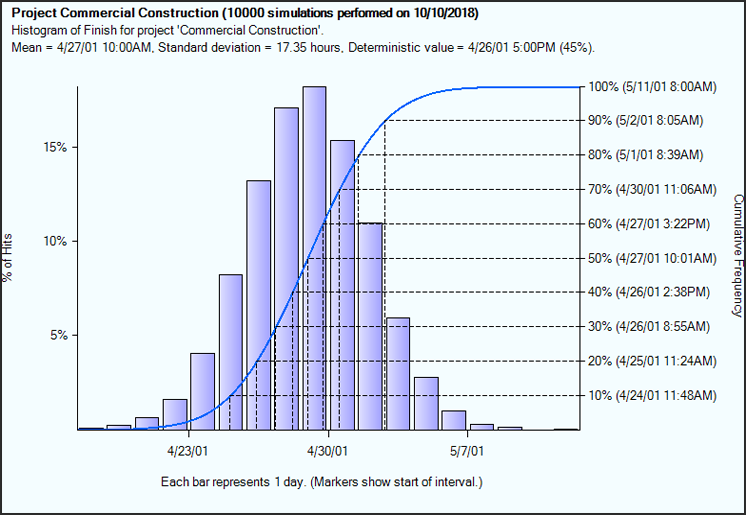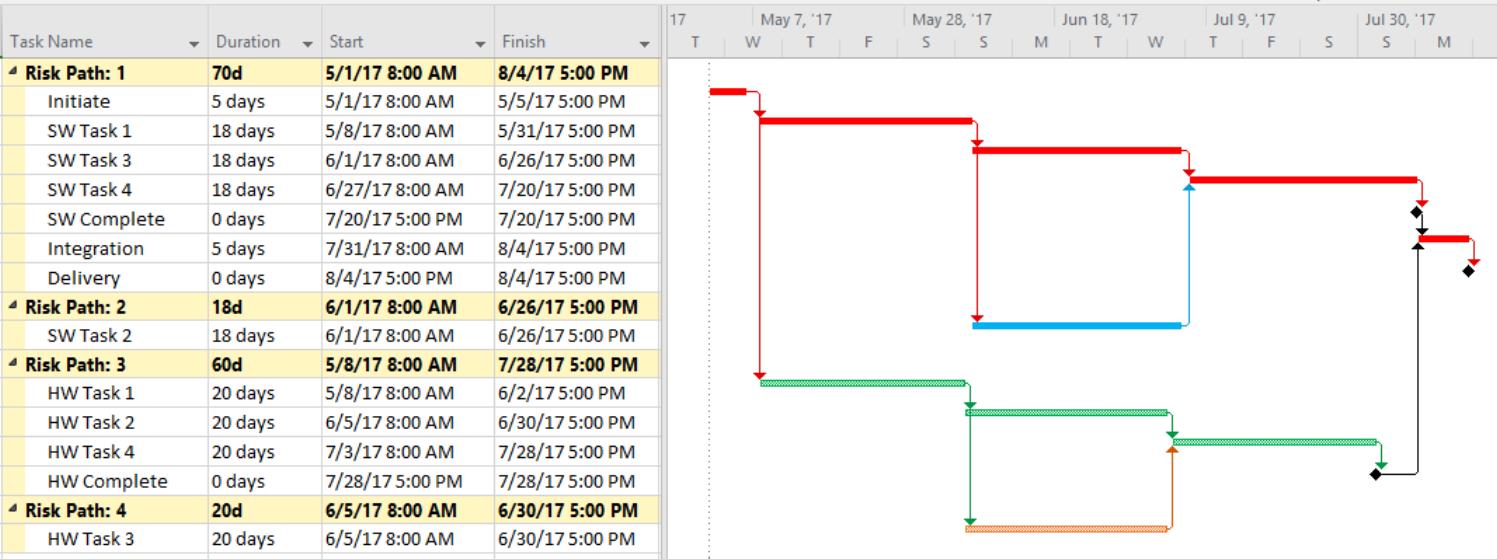Full Monte Features
- Support for normal, lognormal, beta, triangular, and uniform duration uncertainty distributions.
- Probabilistic and conditional branching.
- Task Existence Probability that can be linked to Probability of Occurrence for discrete risks.
- Correlations between task durations and resource cost rates based upon multiple external factors.
- Sensitivity analysis, including sensitivity index, and tornado charts for cost and schedule.
- Expected values, standard deviations, percentiles, histograms, and s-curves for dates and costs for all tasks.
- True cost integration is achieved by resource-loading the schedule as required by AACE Recommended Practice 57R-09.
- Active percentage, critical percentage, sensitivity index, merge bias delay for every task.
- Supports linked projects.
- Automatically save selected results to custom user fields.
- Easy to use (no VBA or other programming required).
- Sophisticated modeling of calendar uncertainty to model weather effects (P6 version only).
- Diagnostic fields to explain the basis for results.





